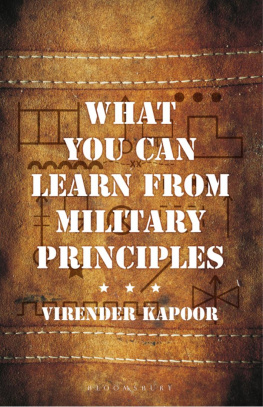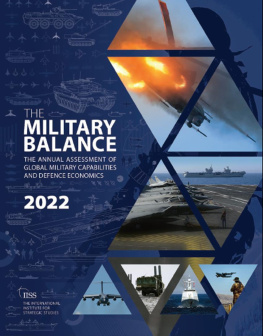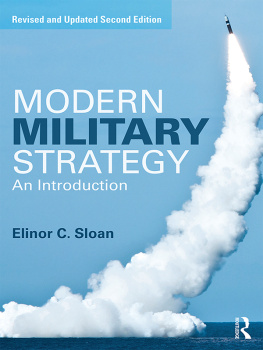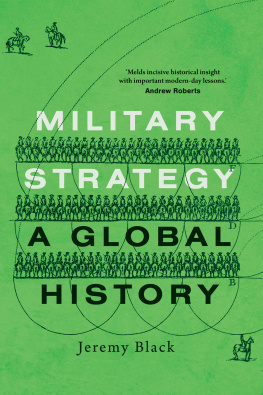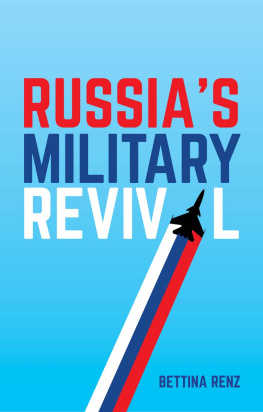If the military were a business, would you buy shares? Over recent years, Western armed forces, particularly the US, have been costing more yet achieving less. At the same time, austerity measures are reducing defence budgets. This book uses defence data to examine the workings of modern Western militaries and explore what kind of strategies can overcome this gap between input and output. Instead of focusing on military strategy, Mikkel Vedby Rasmussen seeks to draw on the ideas of business strategy to assess alternative business cases reforming military HR to combat instability in the Global South or utilising new technologies to overcome the prohibitive costs of current systems. Analysing the philosophical, strategic and budgetary underpinnings of these alternatives, he concludes that a more radical break from current military organisational practices is needed which would allow them to fit within a nations overall national security system without ever-increasing budgets.
Mikkel Vedby Rasmussen is a professor at the University of Copenhagen. He is currently on leave working on policy development in the Danish Ministry of Defence. Rasmussen has previously headed the Centre for Military Studies and the Danish Institute for Military Studies in Copenhagen. He has published widely on security and defence matters, including The Risk Society at War (Cambridge University Press, 2006).

University Printing House, Cambridge CB2 8BS, United Kingdom
Cambridge University Press is part of the University of Cambridge.
It furthers the Universitys mission by disseminating knowledge in the pursuit of education, learning and research at the highest international levels of excellence.
www.cambridge.org
Information on this title: www.cambridge.org/9781107477353
Mikkel Vedby Rasmussen 2015
This publication is in copyright. Subject to statutory exception and to the provisions of relevant collective licensing agreements, no reproduction of any part may take place without the written permission of Cambridge University Press.
First published 2015
Printed in the United Kingdom by Clays, St Ives plc
A catalogue record for this publication is available from the British Library
Library of Congress Cataloguing in Publication data
Rasmussen, Mikkel Vedby, 1973
The militarys business : designing military power for the future / Mikkel Vedby Rasmussen.
pages cm
Includes bibliographical references and index.
ISBN 978-1-107-09477-2 (hardback) ISBN 978-1-107-47735-3 (pbk.)
1. Military art and scienceUnited StatesHistory21st century. 2. United StatesArmed Forces. 3. WarForecasting. I. Title.
U43.U4R48 2015
355.020973dc23
2014043074
ISBN 978-1-107-09477-2 Hardback
ISBN 978-1-107-47735-3 Paperback
Cambridge University Press has no responsibility for the persistence or accuracy of URLs for external or third-party internet websites referred to in this publication, and does not guarantee that any content on such websites is, or will remain, accurate or appropriate.
Contents
Figures
Source: National Defence Budget Estimates for FY 2014, Office for the Undersecretary of Defense (comptroller), May 2013, Table 6-5
Source: John J. McGrath, The Other End of the Spear: The Tooth-to-Tail Ratio (T3R) in Modern Military Operations (Fort Leavenworth, KS: Combat Studies Institute Press, 2007), 103
Source: John J. McGrath, The Other End of the Spear: The Tooth-to-Tail Ratio (T3R) in Modern Military Operations (Fort Leavenworth, KS: Combat Studies Institute Press, 2007), 102
Source: National Defence Budget Estimates for FY 2014 , Office for the Undersecretary of Defense (comptroller), May 2013, Table 6-1
Source: National Defence Budget Estimates for FY 2014 , Office for the Undersecretary of Defense (comptroller), May 2013, Table 6-1
Source: National Defense Budget Estimates for FY 2011 , Office for the Undersecretary of Defense (comptroller), March 2011, Table 6-8, Table 7-5
Source: National Defense Budget Estimates for FY 2011 , Office for the Undersecretary of Defense (comptroller), March 2011, Table 6-8, Table 7-5
Source: NATO, Financial and Economic Data Relating to NATO Defence, Press Release PR/CP(2011)027, Table 1 and Table 6
Source: National Defense Budget Estimates for FY 2014 , Office for the Undersecretary of Defense (comptroller), May 2013, Table 7-7
Acknowledgements
Since 2006 I have been involved in strategic innovation as the director of a government-funded research centre first at the Danish Institute for Military Studies and then at the Centre for Military Studies at the University of Copenhagen. This has given me ample opportunity to engage with the military and military strategy in Denmark, the Nordic countries and on the European level. I have increasingly found that the way military strategy is formulated and the way in which military forces are structured to implement this strategy is taken for granted in ways that in fact make military strategies fail and structure military forces in wasteful ways. It is my impression that there is a widespread understanding of this and there have been numerous attempts to reform elements of the military business, but many shy away from asking the obvious question: are there alternative ways of doing the military business? Thus, I became interested in how one would conceptualise new ways of doing strategy. This interest has been furthered by the fact that I also teach strategy at various military educational establishments, including the NATO Defense College, as well as at the University of Copenhagen. Explaining the state of strategy to my students, I realised, required a more profound understanding of what the military was doing and how this translated to strategy. This pedagogical project is equally important when discussing with politicians and generals what the future priorities of the armed forces should be. The years of austerity have given ample opportunity to do so and this underlined the need to take a step back and look at the military system as well as the strategies it produces. This book is the result of my reflections and I hope it can contribute to the reassessment of the foundations of military strategy which are taking place at the moment.
I would like to thank my colleagues at the Centre for Military Studies. One of the hallmarks of a good academic working environment is that the stuff you casually discuss at lunch ends up inspiring you to write a few pages after lunch and I think my colleagues will find that this has also been the case in this book. Karen Lund Pedersen was kind enough to read an early version of . While I was writing this, Karen and I have set up a masters programme in strategy and the discussions about this have been very instructive for my work on the book. So has the teaching of a summer school on Danish defence policy with my colleague Henrik Breitenbauch. Thanks go also to the Centre for Military Studies research assistants Jacob Petersen, Mads Boss, Lasse Poulsen, Casper Sakstrup and Mikkel Broen Jakobsen. Thanks also to Jon Jay Neufeld for correcting at least some of the mistakes of a non-native English speaker. Special thanks goes to the two anonymous reviewers at Cambridge, who gave me a lot to work with, and plenty of time to do it, as well as to my editor, John Haslam.
Tradition has it that at this point I should thank my wife for keeping children and various domestic animals away while I was writing, but, though Anne in fact gave me that space, her real contribution has been good spirits and a creative mind which keeps me inspired.

